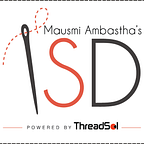Classify The Fault: Defects In Knit Fabric
Defects spoil the aesthetics of the fabric and hence causes a gigantic quality issue. In this series of articles, we are going to discuss various defects that can occur in knit and woven fabrics, the embroidery defects encountered and also the dyeing and printing ones.
Defects in knits are caused due to the faulty raw material, faulty knitting elements, wrong machine settings or faulty dyeing and finishing processes.
Raw Material (yarn) Related defects:
There is a simple way to identify yarn related defects: these defects mostly appear in the horizontal direction in the fabric.
Some of the major yarn related knit fabric defects are:
• Barriness: Horizontal Stripes or streaks of uniform or uneven width, visible in the fabric.
*Feeder: helps to feed the yarn through the machine
• Imperfections: Imperfections are the occurrence of knots, slubs, thick or thin yarns, and neps in the fabric.
• Contaminations: When foreign matter like dead or dyed fibres or husk, etc appear in the fabric.
• Snarling: Snarls are big twisted yarn loops on the fabric surface.
• Spirality: Spirality is when after washing garment gets twisted, and the seams of the garment get displaced from the sides of front and back of the garment.
Knitting Elements Related Defects
These defects appear vertically in the fabric. There are two main defects that come under this categorization:
• Needle and Sinker Lines: Prominent or feeble vertical lines across the fabric.
• Drop Stitches (or holes): Appearance of small or big random holes in the fabric.
Knitting Machine Settings Related Defects
The defects that appear due to wrong machine settings or faulty machine parts come under this category:
• Yarn streaks: Thin horizontal lines that appear at irregularly spaced intervals and are of various sizes.
• Fabric Press off: Appearance of holes in the fabric due to an interruption in a loop formation.
• Broken Ends: a bunch of ends knitted at a point.
Unlike woven fabric, yarn strength in knit fabric is of secondary importance in the quality management of the fabric, as the load that the yarn undergoes during knitting is lower than that in weaving. But knit fabric yarn must have elasticity and should be even with no thick and thin places to ensure quality and prevent frequent needle breaks. Yarns with low friction and even moisture content are hence the preferred choices. When using knit fabrics or when involved in knitting process, keep in mind the above-described defects with their causes and remedies to ensure required parameters are being met, and the fabric thus obtained is of the demanded quality.
Image sources:
•http://www.slideshare.net/OliyadEbba/faults-remediespreventive-measures-in-knitted-fabric-dyeing
http://www.slideshare.net/88azmir/fault-of-knitted-fabrics
•http://www.slideshare.net/sheshir/an-investigation-on-the-inspection-of-grey-finished-knit-fabric-in-wet-processinge
•http://textilecollection.blogspot.in/
•https://shosh101.files.wordpress.com/
